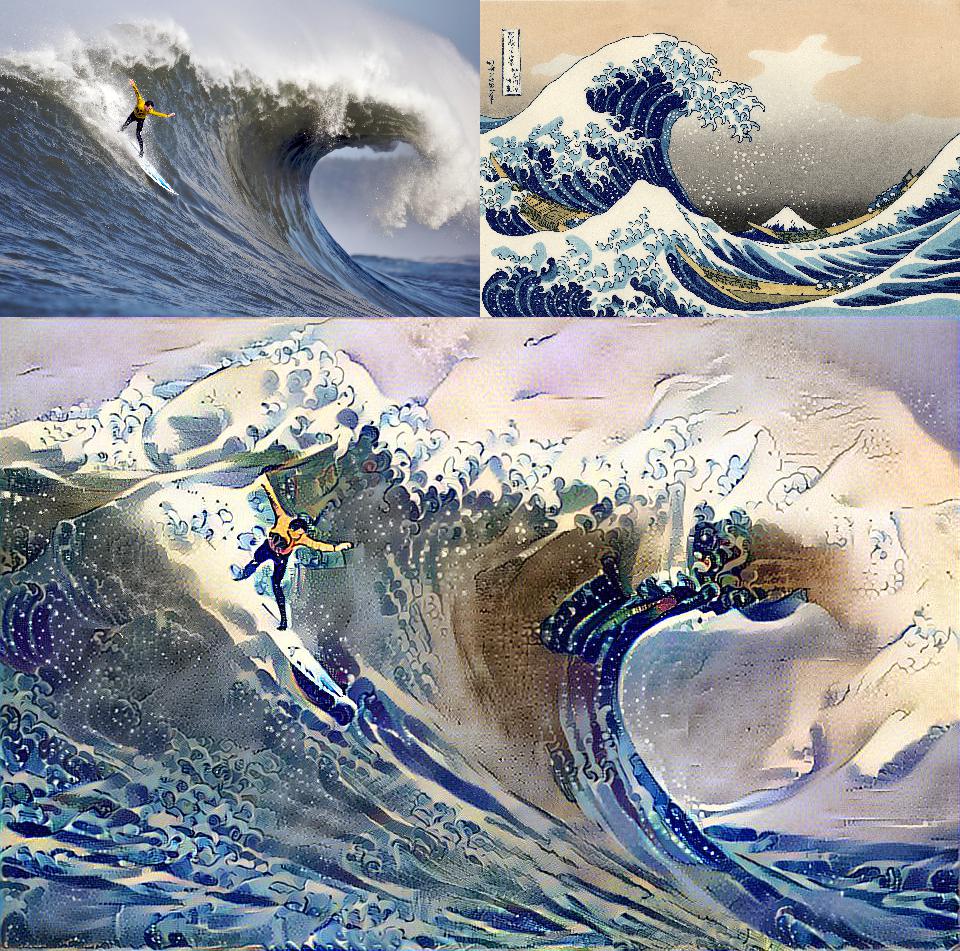An algorithm that transfers the distribution of visual characteristics, or style, of a reference image onto a subject image via an Optimal Transport plan.
- For a general description and pictures: style-transfer-theory.pdf.
- For an explanation of the use of L2-Wasserstein distance instead of the loss function from the Gatys et. al framework see why_wasserstein.ipynb.
- Demo video
tl;dr - Passes a subject and style image through the convolution layers of the vgg19 network. Extracts probabalistic descriptions (first two moments) of the convolution filter activations. Calculates L2-Wasserstein distance between these probability distributions and then modifies the subject image optimally to minimize this distance.
Requires:
- Python 3 (w/ NumPy and PIL)
- Tensorflow (tested w/ version 1.3)
- 'vgg_conv.npy' binary (115.5 MB) which contains calibrated convolution filters from vgg19 network. Can be downloaded here [md5sum: bf8a930fec201a0a2ade13d3f7274d0e]
Basic Usage from Command Line:
python basic_styletrans.py --subject media/wave_small.jpg --style media/kngwa_small.jpg --output media/wave_kngwa.jpg --vggnet vgg_conv.npy
Output:
loss: 118,500,040.00
ALL DONE
post clip | time: 49.0 final loss: 2,771,486.50
synthesized image saved: media/wave_kngwa.jpg

